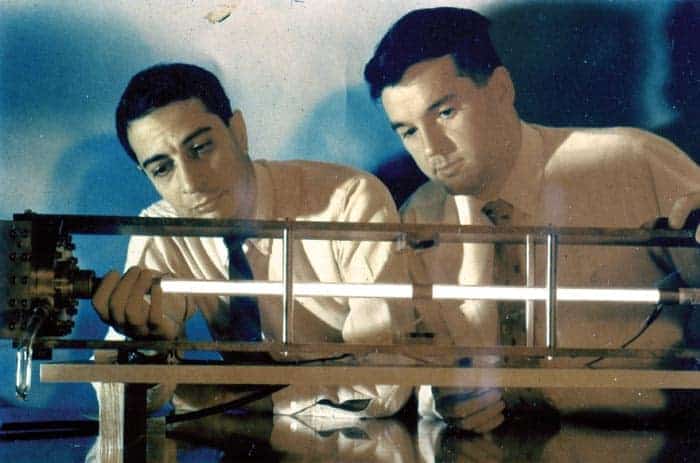The history of scientific progress is replete with institutions that have etched their mark indelibly into the annals of innovation. Among these, Bell Labs stands as a formidable beacon of scientific inquiry and technological advancement. What made Bell Labs special? Was it merely the confluence of brilliant minds or the exemplary infrastructure that scaffolded an environment ripe for innovation? This discourse seeks to unravel those threads which coalesced to forge an extraordinary culture of innovation at Bell Labs and to pose a provocative question: Did the very environment foster a kind of intellectual serendipity that catalyzed groundbreaking discoveries? Furthermore, how can contemporary institutions replicate this elusive culture of innovation in an increasingly competitive landscape?
Established initially as the research and development division for AT&T in 1925, Bell Labs burgeoned into a crucible where theoretical physics and practical engineering intermingled harmoniously. The laboratory is perhaps most renowned for its insatiable curiosity and relentless pursuit of problem-solving, yet it also provides an emblematic case study of how a conducive environment can underpin high-caliber scientific output. Examining the architectural and ideological constructs that comprised Bell Labs reveals a multifaceted approach to innovation.
One salient aspect of Bell Labs’ ethos was its interdisciplinary collaboration. Scientists and engineers from diverse fields—including physics, chemistry, and electrical engineering—cohabitated within the same physical spaces. This adjacency fostered serendipitous encounters and discussions that transcended disciplinary boundaries. When physicists conversed with engineers about practical applications, the dialectic often engendered innovative solutions that might not have emerged within siloed environments. The notion of “diversity” here extends beyond merely academic disciplines; it permeated the very fabric of daily interactions. This leads to our initial challenge: How can modern research institutions recreate such a collaborative spirit in an increasingly fragmented academic landscape?
As Bell Labs famously demonstrated, physical space can facilitate intellectual collaboration. The architectural design of Bell Labs was pivotal—the layout encouraged casual interactions. Laboratories and offices were integrated, allowing for impromptu meetings and spontaneous brainstorming. What if we could design modern laboratories with this principle in mind? Would the mere reconfiguration of space provoke a renaissance in scientific collaboration? A collective endeavor focused on spatial dynamics may unveil new paradigms for productive scientific inquiry.
Bell Labs also prioritized an atmosphere of intellectual freedom; scientists enjoyed substantial leeway in pursuing projects that piqued their curiosity. The institution did not solely focus on immediate commercial applications; rather, it espoused a long-term vision for research. This foresight led to monumental breakthroughs, such as the invention of the transistor in 1947 and advancements in solid-state physics. The prevailing attitude was one of exploration, a sentiment profoundly encapsulated by the adage: “the best way to predict the future is to invent it.” Herein lies another query: How can future research organizations reconcile the tension between immediate deliverables and the unfettered exploration characteristic of Bell Labs’ heyday?
The organizational structure at Bell Labs further exemplified effective innovation governance. It featured a relatively flat hierarchy that enabled rapid decision-making and agile project development. The absence of cumbersome bureaucratic processes allowed research teams to pivot quickly in response to emerging findings. In contrast, many contemporary institutions are mired in bureaucratic inertia, hampering progress. Would an increased emphasis on flattening organizational structures empower scientists in today’s research environments? Adopting more responsive governance models could, in theory, preserve the dynamism that was emblematic of Bell Labs. Cultivating an ecosystem where ideas are unhindered by hierarchy is paramount.
Moreover, fostering a culture that celebrates failure as an essential component of the innovation continuum is critical. At Bell Labs, failures were often regarded not as endpoints but as valuable lessons en route to success. The spirit of experimentation was ingrained in the organization’s philosophy. This perspective posed yet another challenge: How can institutions counteract the stigma surrounding failure, thereby normalizing it as a stepping stone to monumental success?
The talent pool at Bell Labs was undeniably exceptional, drawing luminaries such as Claude Shannon and John Bardeen. However, it is crucial to recognize that success is not solely predicated on individual brilliance. The camaraderie among researchers facilitated an exchange of ideas that fueled collective inspiration. As such, recruitment strategies should not solely focus on attracting the most illustrious individuals but rather on creating teams that harmoniously coalesce, producing a synergistic effect wherein the whole is greater than the sum of its parts. What new paradigms can be embraced in talent acquisition to foster collaborative synergy rather than mere individual accolades?
In summary, the exceptional nature of Bell Labs stemmed from a comprehensive fusion of interdisciplinary collaboration, intellectual liberty, responsive governance, and a culture that valued experimentation. These elements coalesced to form a robust foundation for scientific advancement. As contemporary institutions grapple with the complexities of the modern research landscape, the challenge remains: How do we cultivate an environment reminiscent of Bell Labs—a space not just of inquiry, but of innovative exuberance? Through reconceptualizing spatial dynamics, embracing failure, and cultivating collaborative ecosystems, we can aspire to foster a new generation of innovation hubs that continue to push the boundaries of human knowledge and technological prowess.












